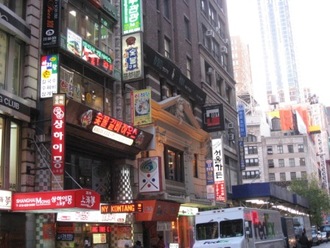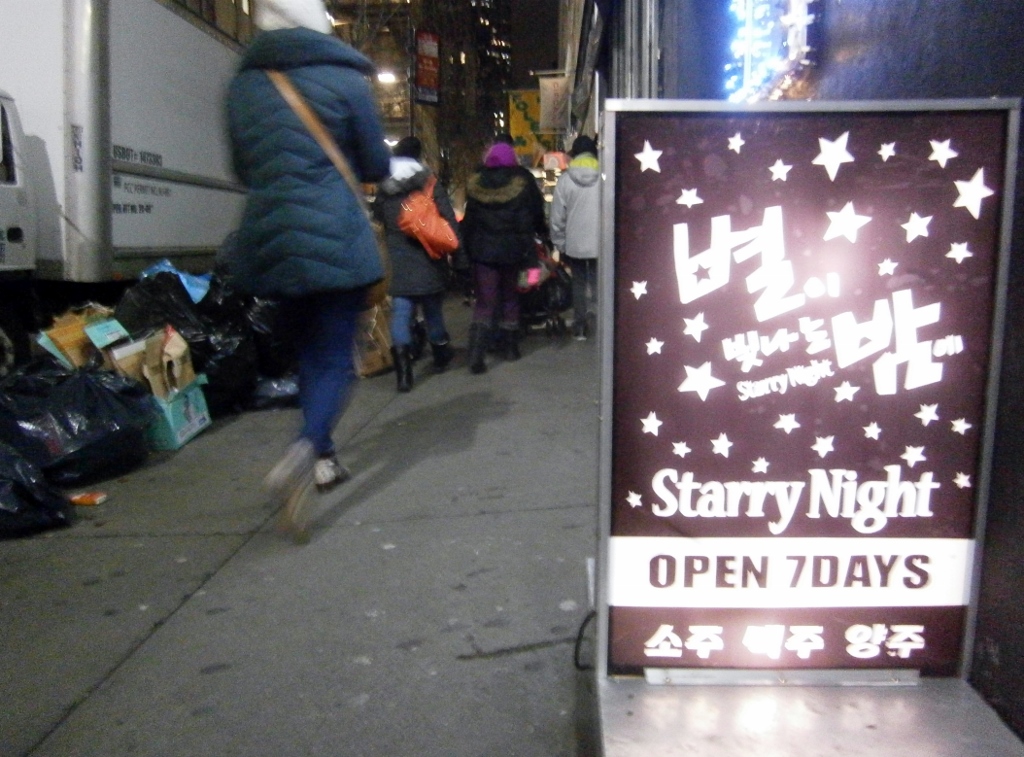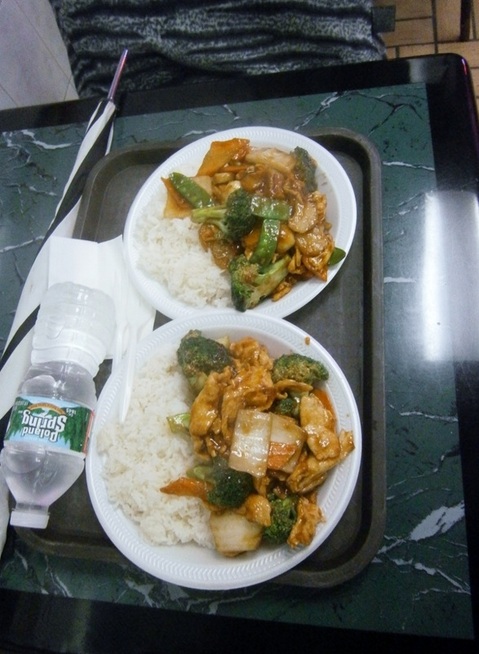It was a little disorienting, somehow, but not as much as encountering this a moment later:
We can tell with certainty that it’s a genuine-Korean affair, you know, because even with only five English words on their sign, they still manage a mistake (no space between ‘7’ and ‘Days’). Haha. Sorry, Korean readers, if any. ^_^
Here is another marker of Korean presence in NYC that I immediately recognized:
This Manhattan Caffe Bene I saw may be something brand new. From the Korea Tourism organization:
Caffe Bene is a leading coffee label of Korea. It is a trend-setting multi-cultural space that offers an ideal combination of coffee, waffle, and gelato. [….] Following the opening of its 500th store in Korea, Caffe Bene is set to open its first branch in New York.
 Manhattan Koreatown, complete with gaudy signs
Manhattan Koreatown, complete with gaudy signs
covering as much square-footage as possible,
in the usual South-Korean style. (Found online).
The Census reports that there are 200,000+ Koreans in the NYC Metro Area. I already knew that there were two million Koreans in the USA — Allegedly, up to one million in Southern California and one million in the rest of the USA. I have rarely encountered many, leading me to conclude they are invisible.
Maybe the USA’s two million Koreans are, mostly, invisible, because they cluster around each other. You won’t see any most of the time, but when you see one, you’ll see many. My impression. Koreans’ group-orientation is among the strongest I’ve encountered…
My friend B.W. stayed at a Korean guesthouse in Manhattan for his two weeks there in 2010. I had gently discouraged him from that (being in the cocoon of Koreanness abroad). See Part-III for comments on B.W.’s impressions of NYC.
It all fit the bill: the greasy food, the utter minimization of all costs (crummy styrofoam plates and plastic forks), the poor grammar and mildly-sour attitude of the Chinese woman taking the order, and the fact that all the cooks seemed likely to be family members. Here was our meal:
By 1870, there was a Chinese population [in Manhattan Chinatown] of 200. By the time the Chinese Exclusion Act of 1882 was passed, the population was up to 2,000 residents. By 1900, there were 7,000 Chinese residents [Wiki]





